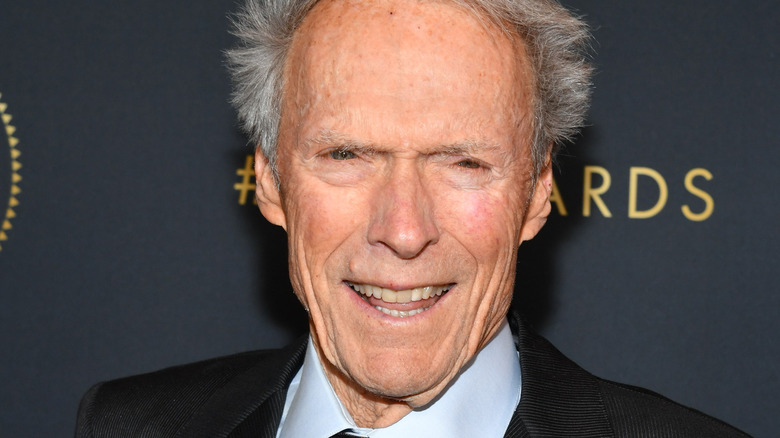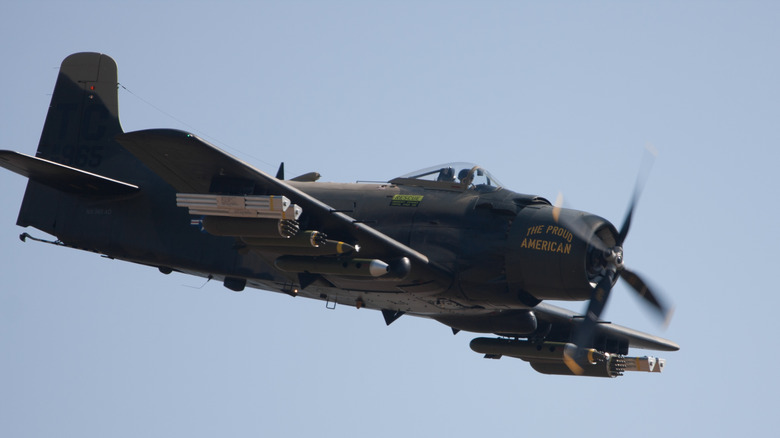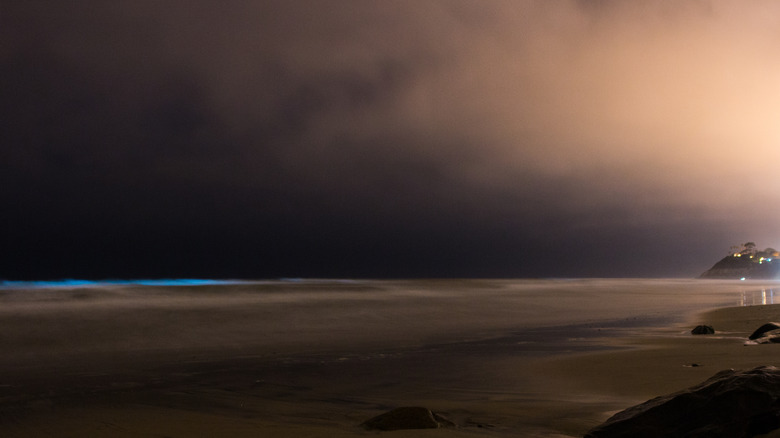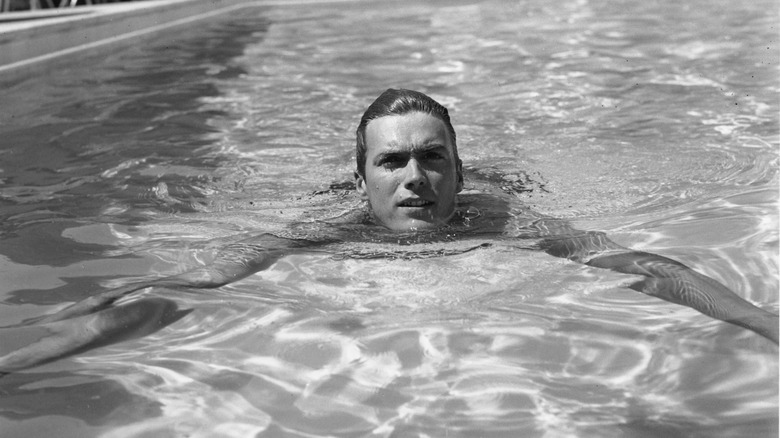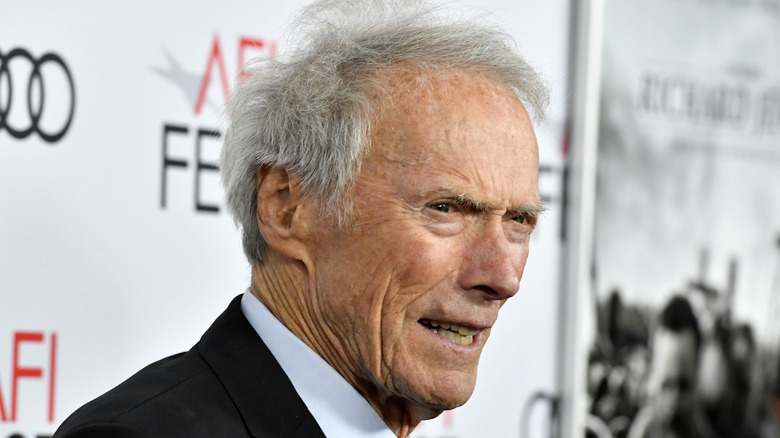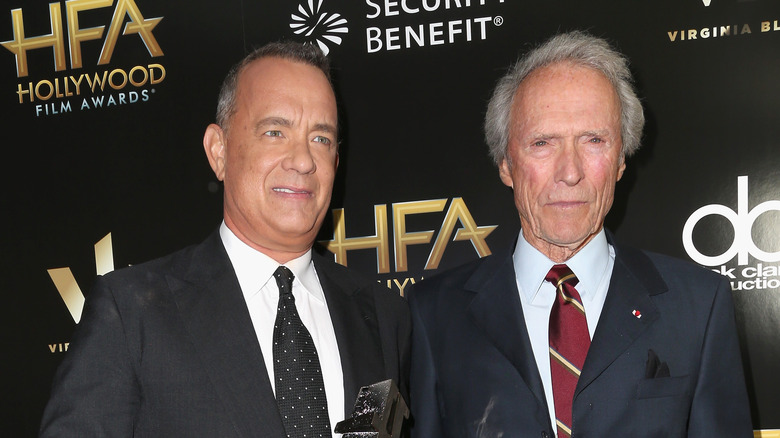How Clint Eastwood Survived Shark-Infested Waters After His Plane Crashed
All U.S. Army Private Clinton Eastwood wanted was a ride back to base. He'd been in Seattle on a pass and was lucky enough to angle a ride with a Navy pilot back to Fort Ord, in Monterey Bay, California. But he soon began to suspect he may not have been so lucky after all on September 30, 1951. It was a "jinx flight" Eastwood told the Associated Press in a 1951 interview after barely surviving the ride. Eastwood and the pilot experienced a series of mishaps that began with them immediately running into bad weather and ended with a crash landing off the coast of Marin County, California.
The two men bailed out into the frigid water of the Pacific, inflated two life rafts, and headed for shore. They got separated and the waves knocked Eastwood off his raft. He had to swim to dry land — 2 to 4 miles, depending on the account. He survived in part thanks to his job in the Army. Before he became a huge Hollywood actor and director, Eastwood was a swimming instructor.
Trouble from the start
Almost from the start of Clint Eastwood's fight from Seattle, where he had been visiting his parents and a girlfriend, trouble plagued the journey. As he and the pilot — Lieutenant Francis Anderson — took off in the small Navy bomber, they ran into bad weather. The back door flew open, requiring Eastwood to rig it shut with wire, and the plane's communication system went out.
Worse was still to come. Lost in a fog miles off the coast and running out of fuel, Anderson had to ditch the plane into the ocean where great white sharks were known to breed. "Everything went wrong," Eastwood told The Hollywood Reporter in 2015. "Radios went out. Oxygen ran out. And finally, we ran out of fuel up around Point Reyes, California, and went in the ocean. So we went swimming." As the sun went down, the two men watched the plane sink below the surface before using their shoes to paddle toward the distant shore.
Dazed and confused
Clint Eastwood told the Daily Independent Journal that after they hit the breakers near shore, he and Lt. Francis Anderson became separated. "The Cinema of Clint Eastwood" says the breakers overturned both their liferafts after they began paddling toward land. Eventually, Eastwood said he overturned and lost his raft, though the Daily Independent Journal says Anderson arrived on shore with his raft intact. Every time Eastwood neared the shore, the waves would push him further out, and at one point the undertow nearly dragged him under. His friend and biographer Richard Schickel said that near exhaustion, the strange bioluminescent waters made Eastwood think he was hallucinating (via "Clint Eastwood: A Biography"). He pushed on and eventually reached the shore.
After crawling onto dry land he made his way to an RCA radio station in Point Reyes. He was cold, dripping wet, and bone tired. The workers there took him in and warmed him up. "The boy was dazed and in a state of shock," a radio operator at the station told the Daily Independent Journal. "He could hardly speak." They pieced together his story and drove him to a Coast Guard station where he and Lt. Anderson, who had also survived the ordeal, reunited.
Clint Eastwood, Army swimming instructor
By the time of Clint Eastwood's plane crash, the 21-year-old had worked a number of jobs, from logging to truck driving, before being drafted during the Korean War and stationed at Fort Ord. "Everybody got shipped to Korea except me," he recalled (via "Clint Eastwood: A Biography"). "My name just didn't come up so I figured I'd make the best of it and went up and talked to the captain. I said, 'Look I'm only a private but I think I can handle this swimming pool thing'."
Among the many jobs Eastwood had before becoming a soldier, he'd done a stint as a lifeguard, which was apparently enough to convince his commanding officer to give him the job. It was a cushy assignment allowing for a lot of freedom. Eastwood had no idea that it would also help keep him alive when disaster struck and he found himself in the frigid Pacific Ocean in the fall of 1951.
The story changed over time
When Clint Eastwood moved to Hollywood and became an actor a few years after his two years of service in the U.S. Army, a tale as harrowing as having to bail out of a bomber into the ocean provided publicists with a ready-made story for the tough guy actor. But as with many stories, the details changed over the years. Later accounts have Eastwood swimming straight from the plane to shore for 3 or 4 miles without the aid of a raft.
More recently, Eastwood played down the event. "I could see the Marin County coast from a distance," he told The Hollywood Reporter in 2016. "I don't know how far it was — it seemed like 50 miles, but it was probably a mile or two." Even so, it must have been a harrowing experience requiring a lot of stamina. The memory would later find resonance in Eastwood's work as a director.
Clint Eastwood used the experience for his art
In 2010, Clint Eastwood directed the film "Hereafter," starring Matt Damon, which begins with a scene of a near-drowning during a tsunami. Eastwood's personal experience provided an extra layer of realism. Then in 2016, Eastwood directed "Sully," a film based on the memoir of commercial airline pilot Chesley Sullenberger, who safely landed an airliner in the Hudson River in 2009. Tom Hanks, who played the lead, believed Eastwood was the only man for the job.
"He almost died! He almost froze in the water!" Hanks told The Hollywood Reporter. "I mean, no one else but Clint could have or should have made this movie." Eastwood recalled his harrowing experience while working on the film, but said it didn't play a part in his decision to direct it. "I definitely did think about it when I was shooting this," he said. "I'm probably the only director who's actually been in a water landing. But it had no bearing on me making this movie. I would have shot this movie anyway."
